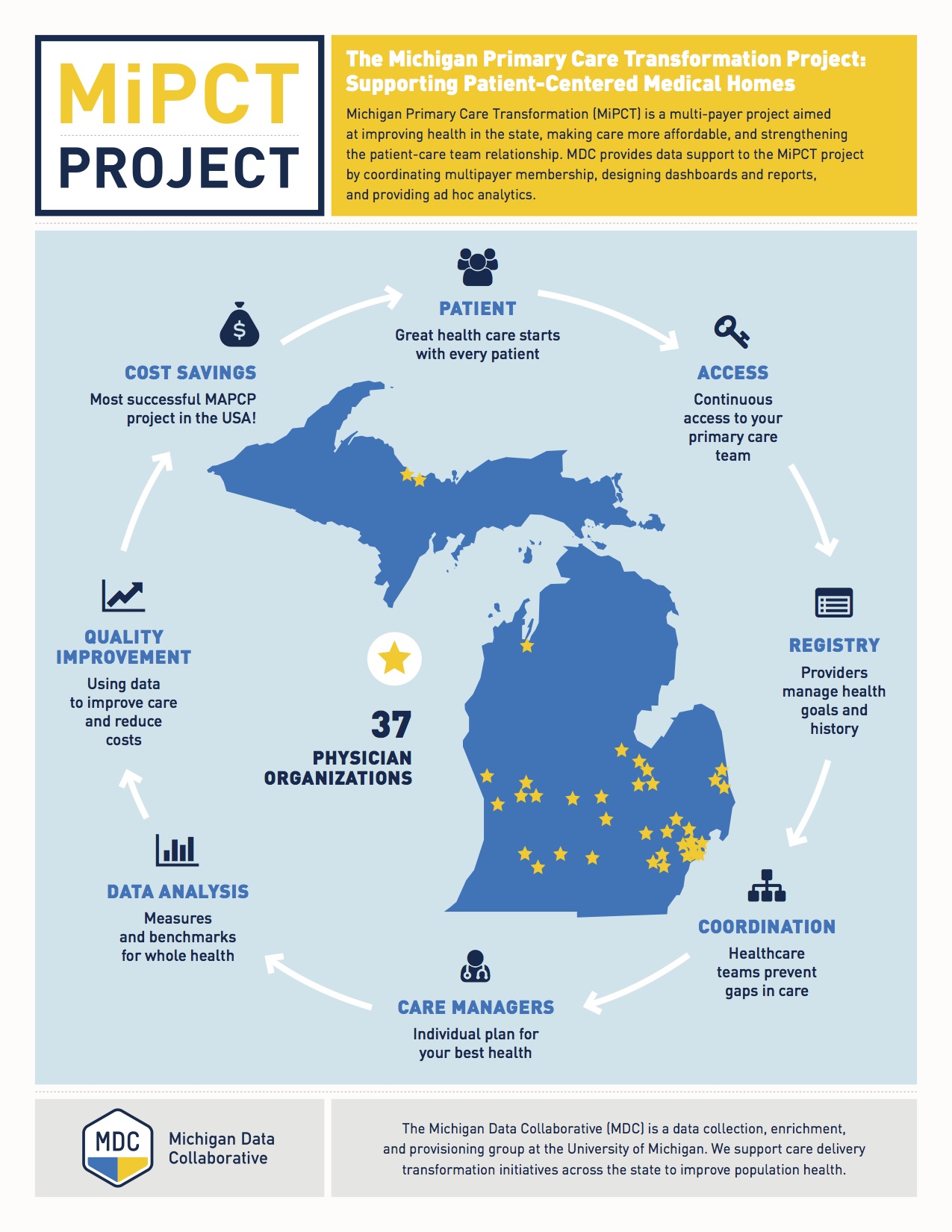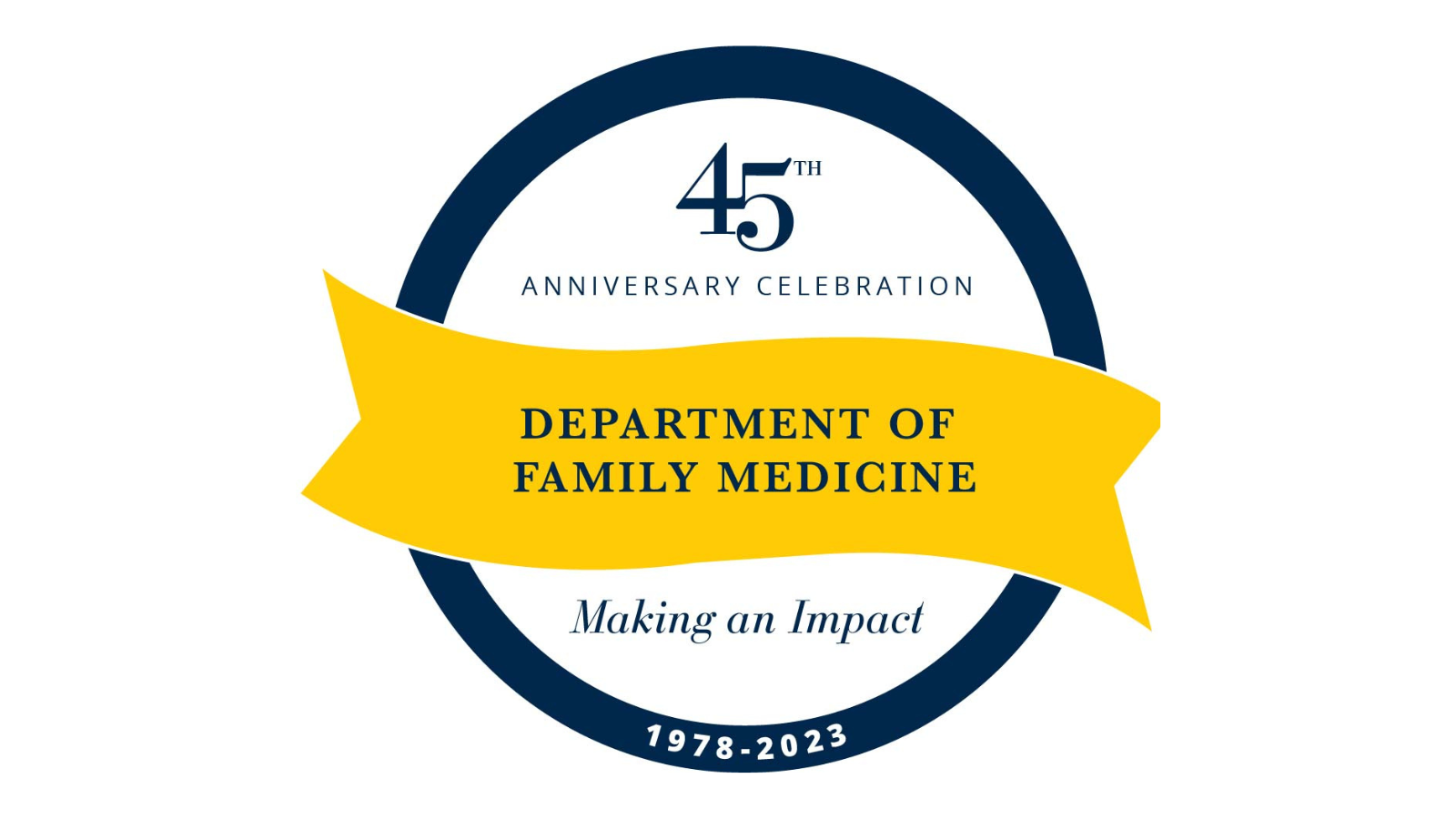
As primary care health providers, we want our patients to feel at home with us, to trust that their primary care services will be accessible, coordinated, compassionate, and comprehensive. This core principle forms the basis of the patient centered medical home (PCMH) model of care. The PCMH model has been widely accepted by medical professional communities and adopted by health care systems and provider care teams across the United states. This concerted shift to implementing a PCMH model can be seen in the recent five-year Michigan Primary Care Transformation (MiPCT) demonstration, which ran from October 2011 to December 2016. MiPCT sought to track the adoption of a PCMH model in 400 primary care practices across Michigan. MiPCT has served approximately 1 million people by 1,900 providers. MiPCT is part of a national Multi-Payer Advanced Primary Care Practice Demonstration with the Centers for Medicaid and Medicare Services.
A new study, led by assistant professor Jean M. Malouin, M.D., M.P.H., focused on how primary care teams adjusted and accepted a key shift towards the team-based PCMH care model--the addition of dedicated care managers. Over 600 care managers were hired and trained as a part of the MiPCT project. A majority of those care managers were licensed registered nurses. The study sought to assess internal reactions from physicians and staff towards the addition of care managers on their primary care teams.
Researchers administered a web-based survey in the third year of the 5-year MiPCT project, from August to October 2014. Survey responses from 284 physicians and 699 clinical and administrative staff members, were included in the data analysis. Responses representing 237 practices across Michigan (68% of the 347 MiPCT practices), including 36 of the 45 MiPCT pediatric practices.
In their analysis, the researchers sought to understand what factors contributed to staff and physicians' regard of the new members of their clinic teams. Did the number of care managers per patient, shorthand for care manager workload, have an impact on how well-regarded care managers were? Did the number of hours per week the care manager spent at their location matter, a measurement of embedment? Did the period of time that care managers had worked at the location make a difference? Did it matter whether the case manager was employed through the primary care practice or through some external source? These questions get at how health services can better staff, structure, and support effective primary care teams and how leaders can make smarter decisions as they shape the PCMH model.
The researchers found that in general, there was a high level of acceptance for their case managers, from both physician and staff respondents. Both groups gave composite average acceptability scores of 4 on a 5-point scale, with 70.4% of nurses and 68.9% of physicians rating the acceptability at 4 or higher. The study's authors' attribute the high average acceptability scores to both the timing of the survey, which was administered following three years of implementation, and to MiPCT's leadership efforts to shepherd practices through the implementation process.
Staff provided higher acceptability ratings when case managers had higher full time equivalency (FTE) at their clinic and also when case managers had worked at their practice for a longer period of time. Acceptance scores varied by specific staff roles; there was lower acceptance among medical assistants and the "other administrative role" category. For physicians, both the amount of time case managers had at their practice and the duration of time they had worked at the practice were significant factors in acceptability ratings. In addition, physicians reported higher acceptability ratings when the care manager was employed by their practice
"Both physicians and practice staff indicated that the embedded care manager is an important member of the team and improved the team’s ability to meet patient needs," Dr. Malouin notes.
She adds, "This study provides direct evidence that the average amount of time spent by care managers in a practice is indeed related to physician and staff acceptance of this new role."
"Future MiPCT studies will test the direct role of embedment [of care managers in primary care practices] in patient outcomes."
The study was published in the March-April 2017 issue of the Journal of the American Board of Family Medicine.
More about the Michigan Primary Care Transformation (MiPCT) demonstration
Article citation: Malouin JM et al. Physician and Staff Acceptance of Care Managers in Primary Care Offices. J Am Board Fam Med March-April 2017 vol. 30 no. 2 140-149. doi: 10.3122/jabfm.2017.02.160246




